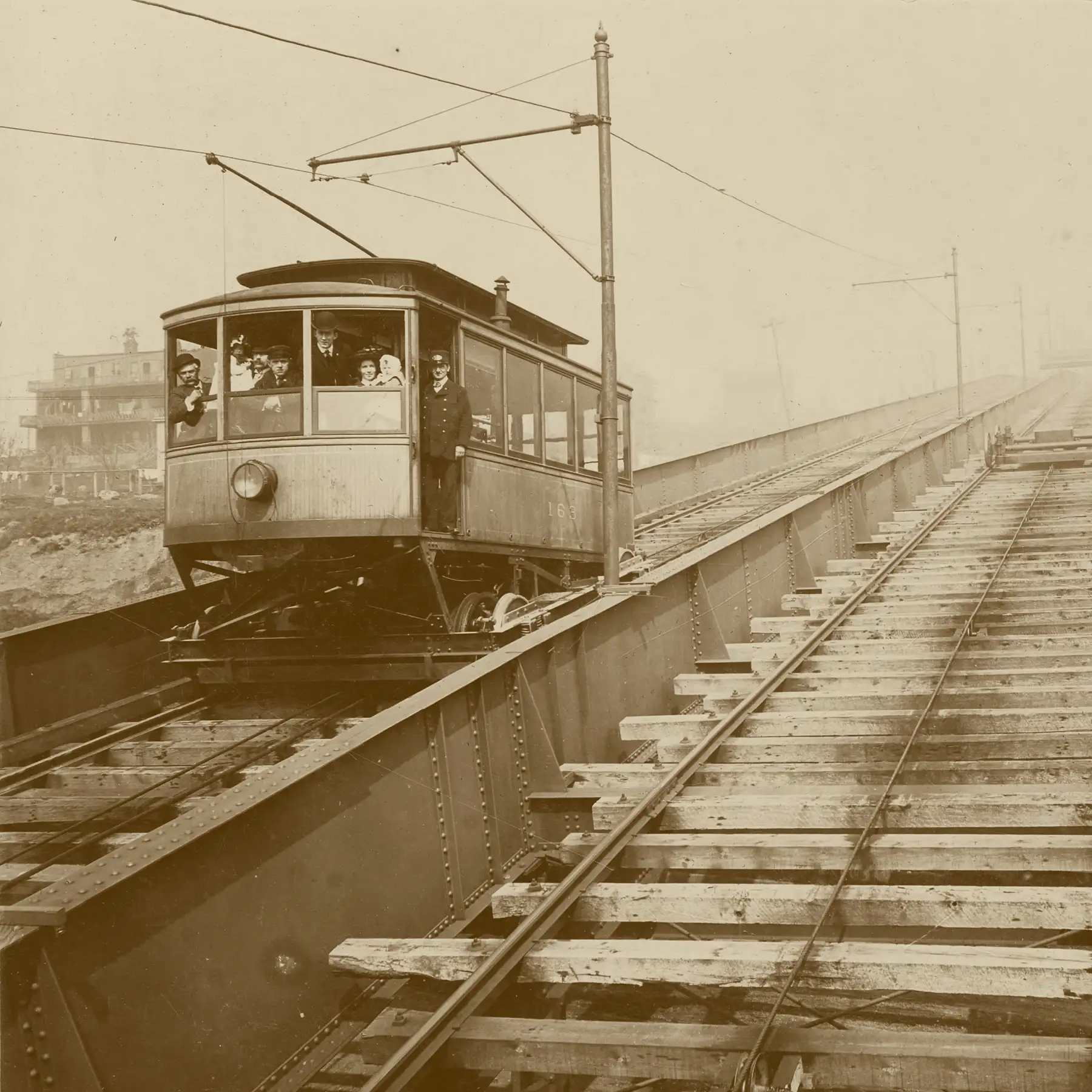Duluth’s Defunct Incline Railroad
Aug 11
The Ups and Downs of the Duluth Incline
If you know anything about Duluth, and if you’re reading this, I suspect you might, you probably know that this fair city is situated on a hill.
That hill is part of what makes Duluth such a great place to be. I’m a big fan of the hill. Two thumbs up for the hill.
Around 1880 the average center of population in Duluth was nestled in what today is considered East Central Hillside. The city was rapidly growing, and developers had filled all the space that they could. If Duluth was to keep growing, somebody was going to need to find more land. Luckily, right at the top of the hill, lay huge swaths of land.
The Highland Improvement Company began developing the area now known as Skyline Parkway, and more units could be built to house the many workers needed to keep Duluth growing. However, there was one small issue. How were the workers who lived atop the hill supposed to get down?
It may seem like a silly question today, but one must keep in mind that transportation looked quite a bit different in the 1880s. If you know anything about cars, and I suspect you might, you probably know that automobiles weren’t something that the average worker would have access to in the 1880s.
In fact, the very first American-made gasoline-powered car wouldn’t be sold until 1896, and they were far from common.
Thankfully there was a perfect solution, an incline railway.
An incline railway is exactly what it sounds like, a passenger trolly that works on an incline.
Incline railroads were not unheard of at the time. Pittsburgh and Cleveland both had incline railroads operating. So, when it came time to begin planning a way to get people from the heights to the bottom of the hill, Samuel Diescher, a young engineer who had designed and built many of the eastern incline railroads, was hired for the task.
Once the plans were set in place, construction began with regular updates being reported on in newspapers of the time. Steel was delivered to the city by rail and ship, and there was so much steel used in the construction of the line that due to Duluth’s weather conditions the trestle could expand or contract as much as 30 inches, which created the need for the trestle to only be connected at the bottom of the hill, while all other supports were floating.
When I started digging into the incline railway, I got a lot of differing information about when it actually got up and running. There were test runs, and investors rode some of those early runs, but from what I was able to track down in an archived copy of the Duluth Evening Herald, I believe that the first day the incline was operating for the public in any official manner was on Saturday, November 14th, of 1891.
Less than a month later, the incline would experience its first accident.
Duluth Evening Herald
December 10, 1891
About 3 o’clock this afternoon the west car of the incline road struck the stone abutment at the base of the hill with force enough to smash the passenger car somewhat and start a few bolts and nails on the big carriage itself. The hauling cable- a steel wire affair 1 ¾ inches in diameter was said to have broken when the car was within 50 feet of the foot of the hill. As a matter of fact, the cable did not break but the engineer at the powerhouse house was negligent. The six or seven people in the car were considerably scared. It seems that the incline has not worked just right yet, and the fault seems to be with the engine, which has not worked as it should. Men have been fixing this defect for several days.
The following summer the Incline got a serious upgrade with the opening of the Beacon Hill Pavilion at the top of the incline. The structure was designed by Francis Fitzpatrick and Oliver Traphagen, two of the biggest names in Duluth architecture.
The pavilion was a beloved spot in Duluth where vaudeville acts, plays, and symphonies all performed. As popular as the incline was for commuters, the pavilion acted as a huge draw for riders. However, the building would ultimately last less than a decade, as disaster struck in 1901.
If you want to hear all about the excitement of flames, flying trolly cars, and fainting women, check out the episode we did on the incline railway on Attracted to Duluth.
Listen to “The Ups and Down of Duluth’s Incline” at the link below, or wherever you get your podcasts!
Image courtesy The Northeast Minnesota Historical Collections, housed in the Kathryn A. Martin Library, on permanent loan from the St. Louis County Historical Society
